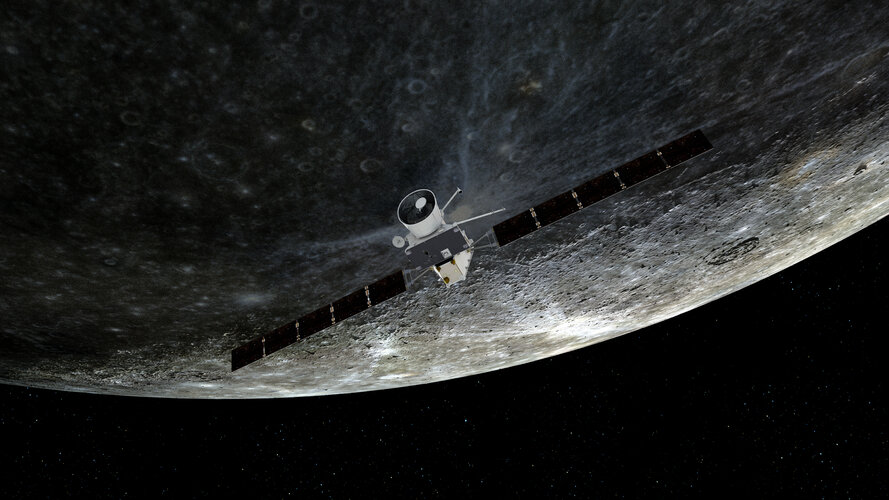
“Even during fleeting flybys these science ‘grabs’ are extremely valuable,” says Johannes Benkhoff, ESA’s BepiColombo project scientist. “We get to fly our world-class science laboratory through diverse and unexplored parts of Mercury’s environment that we won’t have access to once in orbit, while also getting a head start on preparations to make sure we will transition into the main science mission as quickly and smoothly as possible.”
A unique aspect of the BepiColombo mission is its dual spacecraft nature. The ESA-led Mercury Planetary Orbiter and the JAXA-led Mercury Magnetospheric Orbiter, Mio, will be delivered into complementary orbits around the planet by a third module, ESA’s Mercury Transfer Module, in 2025. Working together, they will study all aspects of this mysterious inner planet from its core to surface processes, magnetic field and exosphere, to better understand the origin and evolution of a planet close to its parent star. Dual observations are key to understanding solar wind-driven magnetospheric processes, and BepiColombo will break new ground by providing unparalleled observations of the planet’s magnetic field and the interaction of the solar wind with the planet at two different locations at the same time.



